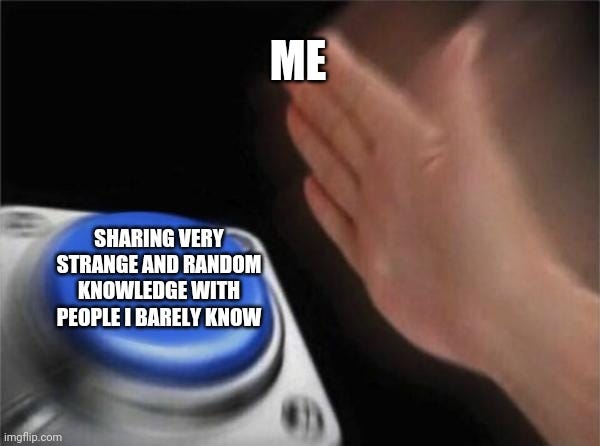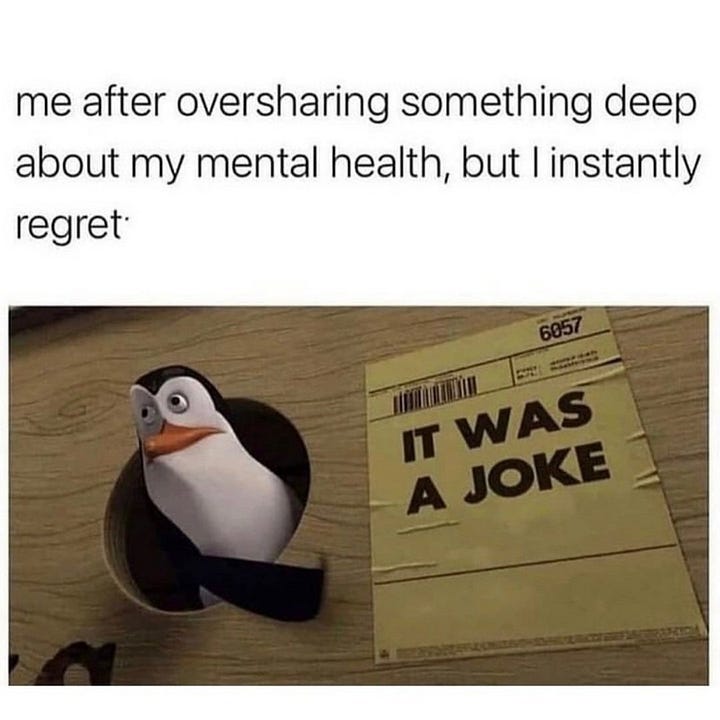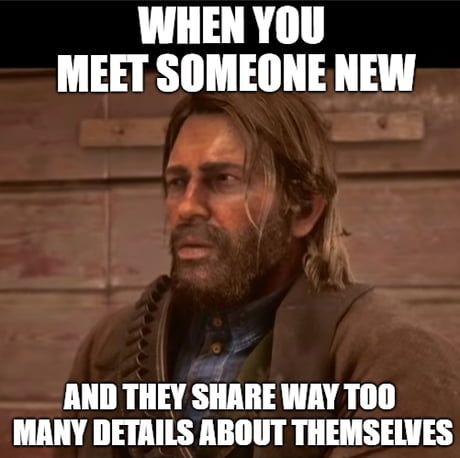Let's stop trauma fishing
Revisiting your childhood might be causing you to re-live it. Why hunting for hardships and diving into the depths of your upbringing without support may be making you more stressed and depressed.
We’re in a unique cultural moment.
With the rise in curiosity about psychotherapy, we’ve started to talk more openly about mental health. Videos with the hashtag #mentalhealth have received over 77 billion views on TikTok and it is becoming more common to share openly and honestly about what we’re going through. This is a good thing. Or is it? It should only be a good thing. Right?
Personally, I think it’s great that these topics are getting more attention. It will eventually help reduce mental health stigma and it will help us build a common language for talking about our inner world. One of the concerns I have as a therapist, and specifically someone who shares what I know online, is that many of the posts, books, and podcasts we consume are devoid of context.
In therapy, a trained mental health professional helps us sort through layers of our experience to help us achieve goals, find healing, and chart a new path forward. A therapist learns about your specific context and helps you identify patterns or responses that are keeping you stuck. Without a context for who you are or what you’ve been through, we wouldn’t be able to provide evidence-based treatment. So, two things are true: Knowing your situation is a crucial part of doing the deeper work. But consuming self-help information is not the same as learning how to apply it in context.
We’re (finally) talking about it
Like I mentioned, I do think the increased availability of self-help resources is a good thing. It helps make healing work more accessible and it is becoming easier than ever to understand ourselves and our situation. This is only beneficial if the information we’re consuming offers us a correct blend of personal context, therapeutic wisdom, relational validation, a slow pace, and compassionate guidance. With therapy language becoming more mainstream and with the use (and overuse!) of psychology terms, the need for a common language to talk about our collective stress, discomfort, fear, and trauma couldn’t be more clear. As I see it, we’re finally talking about things we’ve been needing to talk about and, as with any period of change, we may have to sit through the awkward phase of bringing these terms into the fold of every day life.
Are we pathologizing the human experience?
Having precise language to describe our experience is important. And so is being able to connect with someone who is trained to support you through your experience. Learning precise language to talk about our experiences is only part of the work; it helps build awareness of our situation but it does little to address the patterns and problems. Learning more information is not the same as learning how to apply it. Insight only gets us so far.
In addition, trying to find the correct and precise terminology to describe our conditions and conditioning is hard work. This is the reason we’ve developed things like the The Diagnostic and Statistical Manual of Mental Disorders (“The DSM”) and The International Statistical Classification of Diseases and Related Health Problems (“The ICD”). These help us standardize our experiences in order to help us access treatment, medication, and financial supports. They are also one of the ways we pathologize the human experience and problematize the very normal, adaptive responses to being alive today.
When we overuse therapy terminology, we may be unintentionally perpetuating the very systems that aren’t serving us— ones that label us, put us in boxes, and ones that seek to simplify something that is inherently complex. Sometimes I wonder if the widespread use of therapy language is actually bringing us closer or if it’s driving us further apart.
Here are some patterns I’ve noticed:
Mislabelling. When we misapply therapy terms or use incorrect labels, the language of relationships changes. It shifts us into labelling each other rather than labelling our own feelings of discomfort or identifying hurtful behaviours. “That made me feel uncomfortable,” becomes “You’re a toxic person.”
Misinterpretation. It’s easy to forget that many of our emotions are circumstantial; many of them are situational and do not connect to a prior experience. Incorrect or overuse of therapy terms prevents us from acknowledging context and noticing nuance. It may cause us to misinterpret an everyday situation as evidence of a pathological condition. We may even incorrectly conclude that all forms of discomfort are linked to trauma.
Over-identification. Overusing therapy terms can keep us unnecessarily self-focused. It can also keep us stuck in a loop of shame-induced self-focus where we’re constantly thinking about ourselves and our “negative” reactions. We incorrectly conclude that the only way to validate hardship is to unearth every hardship from the past or become aware of everything that could have contributed to their current circumstance. We over-identify with hardship.
On trauma and hardship
One of the larger patterns I’ve noticed, in addition to what others have noticed about the use of therapy speak and the popularization of mental health terms, is our new cultural relationship with the words trauma, post-traumatic, and traumatized. Many people have come to think that something is traumatic if it once made them feel uncomfortable. Discomfort is not trauma, though it is often a symptom of it.
Trauma, from a definitional standpoint, is often misunderstood. This isn’t to gatekeep who can and who cannot use the term trauma. It is deeply subjective. And perhaps that’s why so many of us have considered using this word to describe our experiences. Calling hard moments in our lives “trauma” validates our struggle and empowers us to find our footing. Some therapists would encourage others to self-determine if they’ve experienced trauma and others would caution against it.
Trauma changes us
In any case, whether it is “little t” or “Big T” trauma, trauma changes us. One of the core features of trauma is that the somatic imprint of what happened changes us. It makes us a new person. It fundamentally changes who we are or shifts the trajectory of our nervous system’s response. When something happens too much, too fast, too soon, and too often, our nervous system overrides previously held responses and creates new ones. These new responses (adaptations) change how we think, how we feel, and how we act. We heal trauma slowly. It is a necessarily slow process as a way to acknowledge how the nervous system became overwhelmed. Going slow is part of the titration process we use so as not to overwhelm or reflood the system.
Going trauma fishing
Trauma therapy is slow (and necessarily so). Sometimes we fall into the trap of diving right into our past as an attempt to unearth the events that contribute to our present suffering. This is not generally advisable because in so doing we might relive our hardest moments rather than remain somatically available to process them. Trauma therapists know that we do not need every detail of an event in order to process it emotionally or somatically. It is not essential for a client to share or recall the details of what happened to them.
With trauma and trauma language becoming more mainstream, I wonder what impact this has on our rules of engagement. I wonder whether or not it is changing how we connect with one another. I wonder if more discussion about trauma is causing us to share unnecessary details about our prior histories and causing us to curiously ask about others’. I worry that it is encouraging us to go trauma fishing.
Trauma fishing: digging into someone’s experiences of hardship or forcing them to recall or share unpleasant memories as a way to connect with them. We are being trauma fished when we feel pressure to share something we’re not ready to share.
I’ve noticed a pattern where some people (and this likely comes from a caring place) request others to share their story, or “fish for trauma”, by either asking personal questions about childhood or by digging into memories from the past. Forcing others to share their story of hardship is not real connection, it's trauma fishing. Forcing others to be open and vulnerable with you is not true vulnerability. With young people, this is happening on TikTok, on first dates, and late at night over FaceTime and Snapchat. With adults, this is being encouraged on Instagram posts, in Facebook groups, and even in workplace meetings. This is called being “trauma fished.”
This is all to bring forth an important point: We need to be mindful of what we’re asking people to share (and for what purpose). Trauma fishing creates a culture of oversharing, where people think they have to be upfront about their deepest struggles in order to experience connection or be considered honest and vulnerable. Trauma is not a currency for connection and should not be treated as such. The last thing we need when we’ve experienced trauma is forced sharing and fake vulnerability.




So, sharing our struggles is bad?
Not exactly. It’s not so black-and-white. Talking about our stories of struggle and hardship can be helpful and is an important part of any therapeutic process. Sharing our story in order to process what happened is called verbal ventilation; in talk therapy, sharing with an empathetic witness is considered “the penultimate metabolizer of emotional pain,” (Walker, 2013). It is important for us to maintain our own personal boundaries around who gets to hear our stories. Our personal information is not for everyone to know, regardless of who feels entitled to it.
This doesn’t mean we shouldn’t share anything. It just means we should protect ourselves by not sharing everything. Speaking in a vulnerable manner without repercussion while paying attention to uncomfortable feelings or body sensations provides release of the emotions of the past. We don’t achieve this by trauma fishing or forcing someone to share their hardships. Trauma fishing often makes people relive their hard experiences and does not usually provide a safe container for emotional processing. That’s the work of a trained therapist.
A safe container helps us process
The safest way to process hard things is by doing so in a therapeutic container. A therapeutic container sets the frame within which the work will take place. The frame helps establish the structure and boundaries of the work, which are two essential components of therapy. You can liken a therapeutic container to a therapy room; there is a single place and time where hardship is discussed, unpacked, explored, and processed. In cases of trauma fishing, there is no frame and therefore no safe container. When there is no safe container, hardship is re-opened and re-experienced rather than reprocessed.
The way forward
If you’ve experienced difficult things, consider the difference between sharing that experience with a trained professional and a friend, family member, or first date. Though it may feel cathartic to connect in that manner, remember that you don’t owe anyone your story, regardless of how bad someone wants to know it. It is your choice to share, if and when you are ready to share it. It might also be helpful to ask yourself, “for what purpose am I sharing this?”
True connection does not come from forcing others to share or by digging into someone’s past. It comes from being compassionate and letting people share on their own terms.
When people feel safe, they feel safe to share.
Jake





